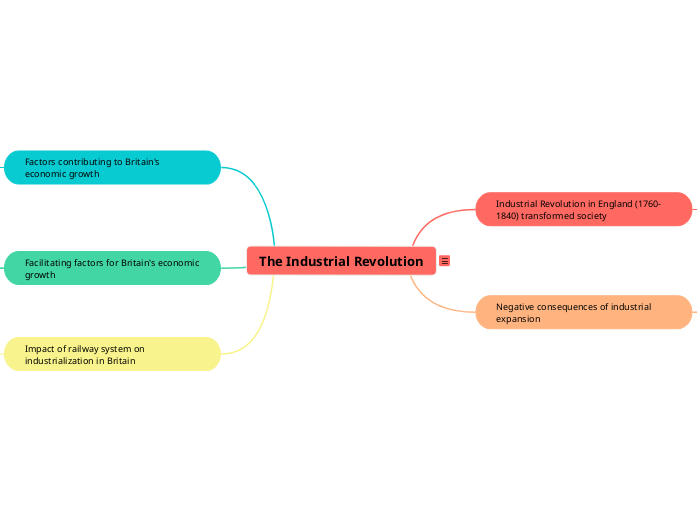The Industrial Revolution
An age of big changes
The expression 'Industrial Revolution' indicates England's economic development from 1760 to 1840, which radically changed the habits, customs and outlook on life in English society. The use of materials like iron, steel and coal led to strong technological innovation. The exploitation of the steam engine (invented by Thomas Newcomen in 1712, but considerably improved by James Watt in 1769), led to the invention of new machinery that made the creation of the factory system and the improvements in transport and communication possible in a short time. Another important invention was the Spinning Jenny, a machine for spinning wool and cotton, invented by James Hargreaves and patented in 1770.
The result was a better exploitation of natural resources and mass production of manufactured goods. However, industrial expansion also had a dark side, for example, a strong negative impact on the environment, as the factories produced a high level of pollution. This significantly worsened the health of the working classes. The presence of large factories increased migration to the cities. The close-knit houses where workers lived were crumbling, had no sanitation and the risk of disease and infection was very high. In fact, mortality rates, especially those of children, rose within a few years.
The factors that favoured Britain's growth were many and of different types. One of the main factors was the availability of the capital deriving from the profits generated by agricultural improvements and increased commerce, which could be reinvested for industry. There was also the expansion of international trade and the monopoly of trade towards the colonies, which were growing in wealth. With the growth of Britain's empire overseas, trade expanded and by the end of the 18th century Britain was the most powerful trading nation in the world. Britain exported textiles, coal, manufactured goods and silver, and imported raw cotton, tobacco and sugar from the West Indies, tea, silk and spices from India, silk from China and furs and fish from Canada. Another factor was the powerful British merchant marine fleet, as well as a large share
in the slave trade [> page 130].
Britain's economic growth was also facilitated by an excellent pre- existing canal and road system, an enterprising and wealthy middle class, a stable government which favoured the expansion of commerce and agriculture, and, finally, availability of raw materials like
cotton and natural resources like
coal and iron ore.
Above all, it was the railway system
which sped up the industrialisation of Britain. In 1814, George
Stephenson built his first locomotive, which greatly affected daily life.
Impact of railway system on industrialization in Britain
George Stephenson's locomotive invention in 1814 greatly affected daily life
Facilitating factors for Britain's economic growth
Availability of raw materials like cotton
and iron ore
coal
Stable government supporting commerce and agriculture
Enterprising and wealthy middle class
Existing canal and road system
Factors contributing to Britain's economic growth
Powerful British merchant marine fleet and involvement in slave trade
Expansion of international trade and monopoly towards colonies
Capital from agricultural improvements and increased commerce invested in industry
Negative consequences of industrial expansion
Migration to cities led to overcrowded and unsanitary living conditions
Working class suffered from poor health conditions and increased mortality rates
High pollution levels from factories impacted the environment
Industrial Revolution in England (1760-1840) transformed society
Invention of Spinning Jenny increased exploitation of natural resources and mass production
Steam engine and new machinery enabled factory system and improvements in transport and communication
Use of materials like iron
and coal led to technological innovation
steel









